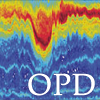
|
Trevor Harrison Senior Research Engineer twharr@uw.edu Phone 206-543-1371 |
|
Publications |
2000-present and while at APL-UW |
FlowPilot: Shoreside autonomy for profiling floats Szuts, Z., T. Harrison, T. Curtin, B. Kirby, and B. Ma, "FlowPilot: Shoreside autonomy for profiling floats," Proc., OCEANS, 25-28 September, Biloxi, MS, doi:10.23919/OCEANS52994.2023.10337384 (MTS/IEEE, 2023). |
More Info |
11 Dec 2023 |
|||||||
|
Over the last twenty years, profiling floats have revolutionized ocean observations with globally distributed Lagrangian arrays performing fixed vertical sampling cycles. Here we investigate adaptive sampling with an array of inter-dependent floats guided by a software package called FlowPilot, which uses all available float measurements to select park depths that provide favorable drifts based on sampling goals. Drift predictions are performed with multiple prediction methods, including methods that use float data (drift velocity, geostrophic velocity calculations) or from external sources like numerical ocean forecast models. A skill-based weight is assigned to each method based on how accurately it predicts recent drifts. With this generalized approach to prediction, disparate methods can be combined numerically to permit multi-method optimization. The emergent skill of FlowPilot is tested and quantified by numerical simulations that minimize dispersion by keeping a grid of floats close to the center of the deployment box. |
|||||||||
Adaptable and distributed sensing in coastal waters: Design and performance of the μFloat system Harrison, T.W., C. Crisp, J. Noe, J.B. Joslin, C. Riel, M. Dunbabin, J. Neasham, T.R. Mundon, and B. Polagye, "Adaptable and distributed sensing in coastal waters: Design and performance of the μFloat system," Field Rob., 3, 516-543, doi:10.55417/fr.2023016, 2023. |
More Info |
1 Mar 2023 |
|||||||
|
Buoyancy-controlled underwater floats have produced a wealth of in situ observational data from the open ocean. When deployed in large numbers, or "distributed arrays," floats offer a unique capacity to concurrently map 3D fields of critical environmental variables, such as currents, temperatures, and dissolved oxygen. This sensing paradigm is equally relevant in coastal waters, yet it remains underutilized due to economic and technical limitations of existing platforms. To address this gap, we developed an array of 25 μFloats that can actuate vertically in the water column by controlling their buoyancy, but are otherwise Lagrangian. Underwater positioning is achieved by acoustic localization using low-bandwidth communication with GPS-equipped surface buoys. The µFloat features a high-volume buoyancy engine that provides a 9% density change, enabling automatic ballasting and vertical control from fresh to salt water (~3% density change) with reserve capacity for external sensors. |
|||||||||
Experimental validation of float array tidal current measurements in Agate Pass, WA Harrison, T.W., N. Clemett, B. Polagye, and J. Thomson, "Experimental validation of float array tidal current measurements in Agate Pass, WA," J. Atmos. Ocean. Technol., 40, 475-489, doi:10.1175/JTECH-D-22-0034.1, 2023. |
More Info |
12 Jan 2023 |
|||||||
|
Tidal currents, particularly in narrow channels, can be challenging to characterize due to high current speeds (> 1 m s-1), strong spatial gradients, and relatively short synoptic windows. To assess tidal currents in Agate Pass, WA, we cross-evaluated data products from an array of acoustically-tracked underwater floats and from acoustic Doppler current profilers (ADCPs) in both station-keeping and drifting modes. While increasingly used in basin-scale science, underwater floats have seen limited use in coastal environments. This study presents the first application of a float array towards small-scale (< 1 km), high resolution (< 5 m) measurements of mean currents in energetic tidal channel and utilizes a new prototype float, the μFloat, designed specifically for sampling in dynamic coastal waters. We show that a float array (20 floats) can provide data with similar quality to ADCPs, with measurements of horizontal velocity differing by less than 10% of nominal velocity, except during periods of low flow (0.1 m s-1). Additionally, floats provided measurements of the three dimensional temperature field, demonstrating their unique ability to simultaneously resolve in situ properties that cannot be remotely observed. |
|||||||||






